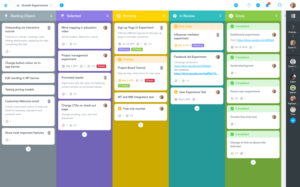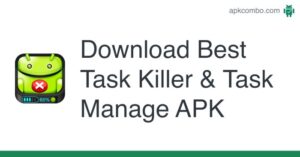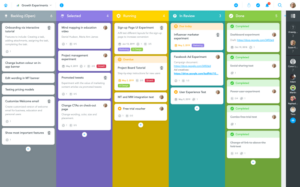Babbel or Duolingo – Embark on a journey to discover the nuances of Babbel and Duolingo, two renowned language learning platforms. This comprehensive analysis delves into their distinct approaches, course content, user experience, pricing models, and community support, providing invaluable insights to guide your language learning journey.
Language Learning Comparison
Babbel and Duolingo are two popular language learning platforms that offer different approaches to language acquisition. Babbel focuses on interactive, conversation-based lessons, while Duolingo emphasizes gamification and bite-sized exercises.
Lesson Structure
Babbel’s lessons are structured around real-world conversations, with a focus on speaking and listening skills. Lessons typically include a mix of grammar explanations, vocabulary exercises, and interactive dialogues.
Duolingo’s lessons are more bite-sized and gamified, with a focus on repetition and spaced repetition. Lessons consist of short exercises that cover vocabulary, grammar, and pronunciation, and users earn points and progress through levels as they complete lessons.
Strengths and Weaknesses
- Babbel:
- Strengths: Focus on speaking and listening, interactive lessons, personalized feedback.
- Weaknesses: More expensive than Duolingo, less emphasis on grammar.
- Duolingo:
- Strengths: Gamified lessons, bite-sized exercises, free to use.
- Weaknesses: Less focus on speaking and listening, can be repetitive.
Specific Language Learning Features
Babbel offers a variety of features to support language learning, including:
- Live classes with native speakers
- Speech recognition technology for pronunciation practice
- Personalized review system to reinforce learning
Duolingo offers a variety of features to support language learning, including:
- Gamified lessons with points and rewards
- Spaced repetition algorithm to optimize learning
- Community forum for peer support
Course Content Analysis
Babbel and Duolingo offer comprehensive language learning programs with diverse course content. Let’s delve into their offerings and assess their quality and effectiveness.
Variety of Languages and Levels
Both platforms offer a wide range of languages, including popular ones like Spanish, French, German, and Italian, as well as lesser-known languages like Polish, Norwegian, and Indonesian. Babbel focuses primarily on European languages, while Duolingo has a broader selection of languages from different regions.
In terms of levels, Babbel offers beginner to intermediate courses, while Duolingo provides lessons from beginner to advanced levels. Both platforms offer placement tests to assess users’ current proficiency and tailor their learning journey accordingly.
Lesson Materials Quality
Babbel’s lessons are structured and comprehensive, with a focus on real-world conversations and practical language use. They incorporate audio, video, and interactive exercises to enhance engagement and retention.
Duolingo’s lessons are more gamified and interactive, utilizing a variety of exercises like multiple-choice questions, fill-in-the-blanks, and speaking challenges. While engaging, some users may prefer a more structured approach like Babbel’s.
Effectiveness
Both platforms employ research-backed methods to enhance language learning. Babbel uses spaced repetition to reinforce new vocabulary and grammar, while Duolingo incorporates gamification to motivate learners and track progress.
Studies have shown that both Babbel and Duolingo can effectively improve language skills, with users reporting significant gains in vocabulary, grammar, and speaking abilities.
User Experience Evaluation

Both Babbel and Duolingo offer user-friendly interfaces designed to enhance the language learning experience. Babbel features a clean and intuitive layout, while Duolingo incorporates gamification elements to make learning more engaging.
Babbel’s interface is straightforward and easy to navigate. Lessons are organized into clear modules, and users can easily track their progress through a progress bar. Duolingo, on the other hand, employs a more playful approach. Users advance through levels by completing bite-sized lessons and earning points for correct answers.
Overall User Experience
Babbel provides a structured and immersive learning experience, with detailed explanations and interactive exercises. Duolingo focuses on gamification and spaced repetition, making learning feel more like a game. Both platforms offer a variety of learning activities, including interactive dialogues, grammar exercises, and vocabulary practice.
Babbel and Duolingo are two popular language learning apps, each with its own strengths and weaknesses. However, when it comes to effectiveness, the most effective language learning app is one that provides a comprehensive approach to learning, including grammar, vocabulary, pronunciation, and conversation practice.
Studies have shown that apps that incorporate these elements into their curriculum can significantly improve language skills. For more information on the effectiveness of language learning apps, refer to this article. With their focus on interactive exercises and personalized learning paths, Babbel and Duolingo both offer effective ways to learn a new language.
Positive User Feedback, Babbel or Duolingo
- Babbel: “User-friendly interface and clear explanations make learning a breeze.”
- Duolingo: “Fun and engaging gamification elements keep me motivated.”
Negative User Feedback
- Babbel: “Limited free content and subscription cost can be a deterrent.”
- Duolingo: “Over-reliance on gamification may not suit all learning styles.”
Pricing and Subscription Models
Babbel and Duolingo offer different pricing models and subscription options to cater to the diverse needs of language learners. Babbel primarily operates on a subscription-based model, while Duolingo offers a combination of free and premium subscription options.
Babbel
Babbel’s subscription plans range from monthly to annual options, with varying levels of features and access to courses. The monthly subscription provides access to all language courses, interactive exercises, and personalized lessons, while the annual subscription offers additional discounts and extended access to the platform’s features.
Duolingo
Duolingo offers a freemium model, allowing users to access basic language courses and features without any cost. The premium subscription, Duolingo Plus, provides additional features such as personalized lesson plans, progress tracking, and offline access to lessons. Duolingo Plus also removes advertisements from the platform.
Cost-Effectiveness
The cost-effectiveness of Babbel and Duolingo depends on the individual’s learning needs and budget. Babbel’s subscription plans offer comprehensive access to its language courses and features, while Duolingo’s freemium model allows users to learn a language for free. However, Duolingo Plus provides additional features and benefits that may enhance the learning experience.
Ultimately, the best choice depends on the learner’s specific requirements and financial situation.
Community and Support: Babbel Or Duolingo
Babbel and Duolingo both offer community and support features to their users, but they do so in different ways. Babbel has a more traditional approach, with forums and user groups where users can connect with each other and ask questions.
Duolingo, on the other hand, has a more gamified approach, with a community forum where users can share tips and tricks, as well as a leaderboard where users can compete with each other.
Both Babbel and Duolingo offer customer support, but the level of support varies. Babbel offers email and phone support, while Duolingo only offers email support. However, Duolingo’s community forum is very active, and users can often find answers to their questions there.
Community Engagement
The level of community engagement on Babbel and Duolingo is high. Both platforms have active forums and user groups where users can connect with each other and ask questions. Duolingo also has a leaderboard where users can compete with each other, which helps to foster a sense of community.
Customer Support
Babbel offers email and phone support, while Duolingo only offers email support. However, Duolingo’s community forum is very active, and users can often find answers to their questions there.
Final Summary
Whether you seek structured lessons, interactive exercises, or immersive experiences, Babbel and Duolingo offer a range of options to cater to diverse learning styles. Ultimately, the choice between these platforms hinges on individual preferences, learning goals, and budget. By carefully considering the strengths and weaknesses Artikeld in this analysis, you can make an informed decision that empowers your language learning success.




